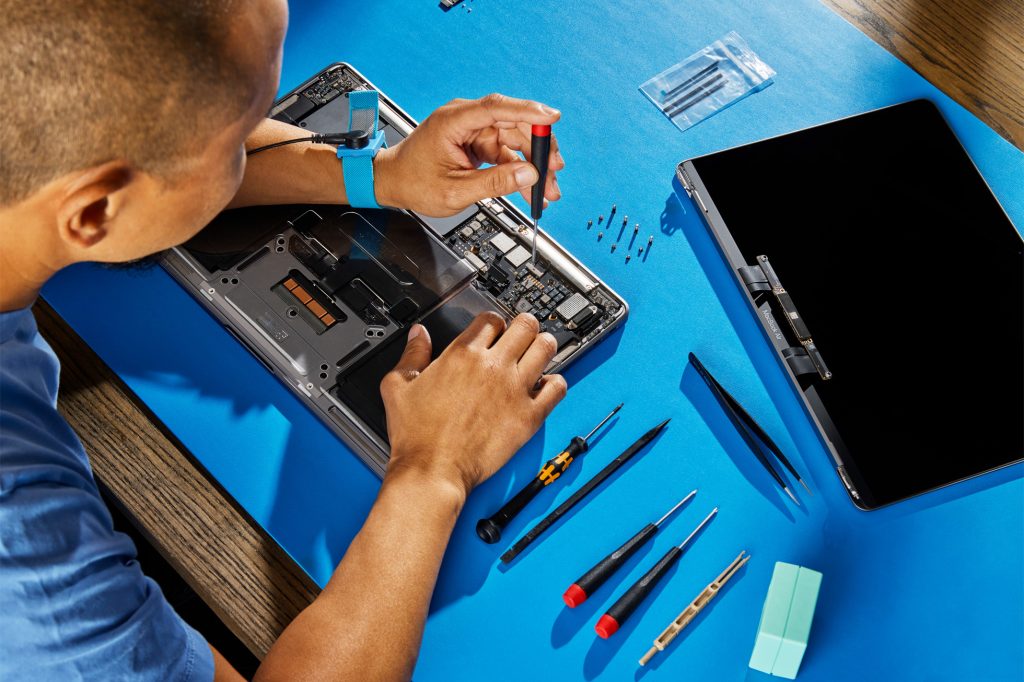After launching it in the US earlier this year, Apple’s Self Service Repair program has arrived in eight European countries. Customers there will be able to perform many of the most common fixes on the iPhone 12 an iPhone 13 lineups, along with MacBooks with Apple silicon (not Intel models). “The Self Service Repair Store provides access to more than 200 individual parts and tools, as well as repair manuals,” Apple said in a press release.
Spare parts and tools can be purchased at Apple’s Self Service repair store in Belgium, France, Germany, Italy, Poland, Spain, Sweden, and the UK. Apple said that they’re the same ones, at the same prices, as those available to authorized repair providers. If you’d rather not purchase a tool for a one-time repair, you can rent a kit for a week at £54.90. Customers can send back replaced parts for refurbishment and recycling and potentially receive a credit.
A few examples of part prices include a battery module for £70.78 (€77.04), a display module for £282.28 (€327.11) and a camera module for £168.55 (€192.76). A lot of tools are required for an iPhone 13 repair, including a battery press, display press, adhesive cutter, various torque drivers and a magnetizer (among others), so the rental seems like a good solution. Also, it goes without saying that you should feel confident doing relatively complex repair jobs.
It’s a good option for folks who may be far from an authorized Apple repair center. At the same time, you may want to compare the price of the parts, tool rental and your own time with the cost of a professional repair from Apple or a third party.
“We believe the best technology for our customers and for the planet is technology that lasts, which is why we design our products to be durable and rarely require maintenance or repair,” said Apple COO Jeff Williams. “But when a repair is needed, we want customers to have many options for safe, reliable, and secure repair.”
That’s well and good, but Apple was essentially forced into this position by right-to-repair rules both in the United States and Europe. The EU also wants you to be able to go back more than two generations for repairs. It recently proposed new rules that would require 15 components (batteries, displays, chargers, etc.) to be available for at least five years after a phone is released in the EU — or back to the iPhone X, in Apple’s case.
The EU also passed a law requiring USB-C charging for mobile devices by the end of 2024, meaning that Apple will have to eliminate its Lightning connector on iPhones by that time. The law represents an effort to eliminate e-waste in the form of cables, since even owning two Apple devices (an iPad Pro and an iPhone) requires two separate cables.

